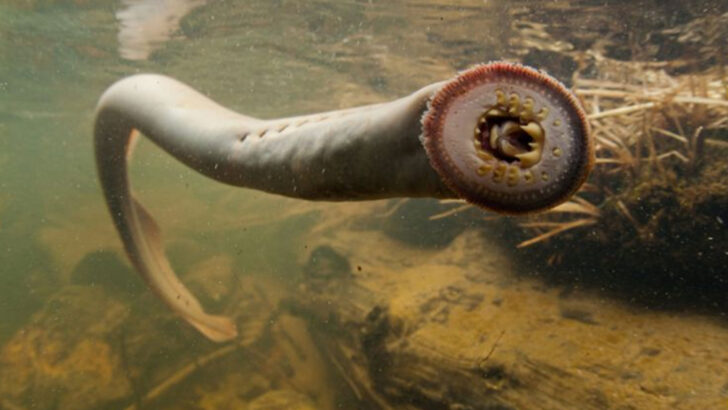Some monsters never left the past—they just moved underwater.
Forget Jurassic Park. America’s lakes, rivers, and coastlines are home to real-life relics with faces straight out of the fossil record.
We’re talking armor-plated fish, jaw-snapping reptiles, and creatures so strange they look like they missed the memo on modern evolution. These animals have survived ice ages, shifting continents, and everything in between—all while keeping their ancient edge.
They may not breathe fire or tower over trees, but they carry the raw, unpolished power of Earth’s earliest predators.
Here are 13 prehistoric-looking animals still lurking in American waters—living proof that nature doesn’t always hit the refresh button.
American Paddlefish
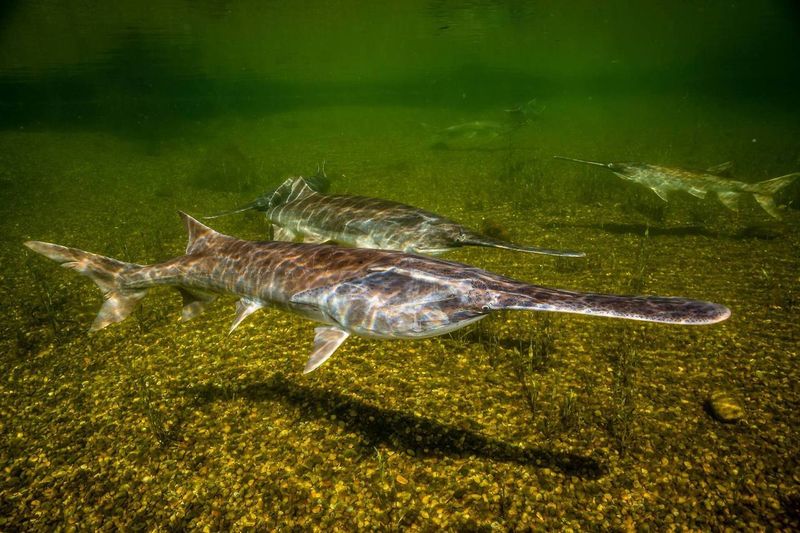
American Paddlefish are ancient creatures with unique paddle-shaped snouts. These fascinating fish can be found in the Mississippi River Basin. Their long snouts help them detect plankton, their primary food source.
Paddlefish are remarkable survivors, having outlived many other species from their era. Their skin is smooth and scaleless, resembling the prehistoric creatures of yore. Despite their ancient appearance, they are gentle giants of the river.
Interestingly, they can reach lengths of up to seven feet, making them one of the largest freshwater fish in North America.
Alligator Gar

The Alligator Gar, with its elongated body and fierce teeth, appears as a relic from the past. Known for its armor-like scales and alligator-like snout, it’s a formidable predator in American waters.
This fish inhabits slow-moving rivers, lakes, and bayous, where it ambushes prey with sudden bursts of speed. Its prehistoric look is matched by its tenacious hunting skills.
Alligator Gars are essential to their ecosystems, controlling fish populations and maintaining balance. Their existence dates back over 100 million years, a testament to their evolutionary success.
Horseshoe Crab
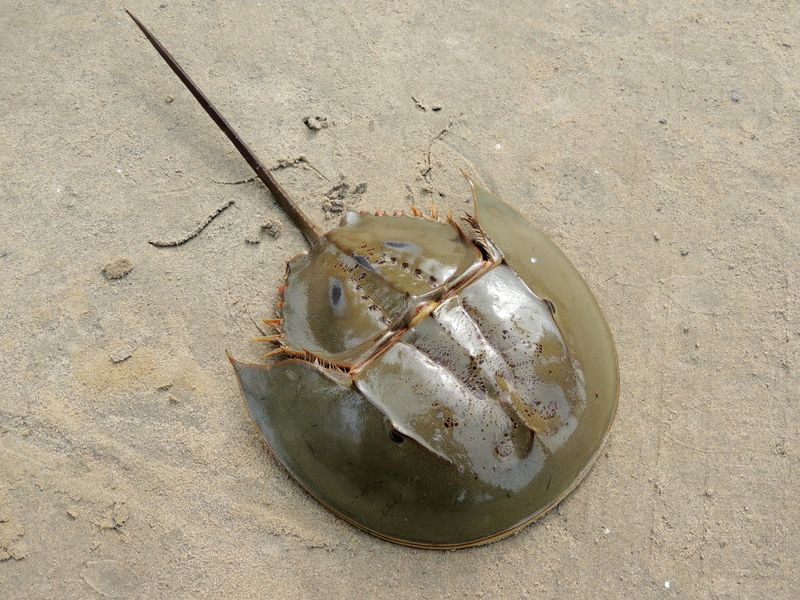
Horseshoe Crabs are living fossils that have roamed Earth for millions of years. Their unique, dome-shaped shells and spiked tails make them unmistakable.
Found along the Atlantic Coast, these creatures play a crucial role in the ecosystem. Horseshoe Crabs’ blue blood is vital for medical research, helping to ensure the safety of vaccines and medications.
Despite their intimidating appearance, they are harmless creatures. They come ashore during full moons to mate, a spectacular natural event that attracts numerous birds and marine life.
Sturgeon
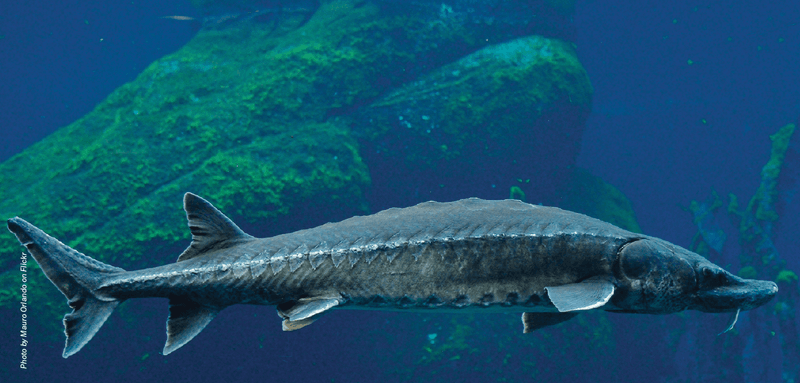
Sturgeons are majestic fish with bodies covered in bony plates, giving them a distinctly ancient look. These creatures can be found in rivers and coastal areas across North America.
Renowned for their size, some sturgeons can grow over 12 feet long, making them one of the largest freshwater fish. Their presence in folklore and history reflects their significance in various cultures.
Their slow reproductive cycles and overfishing have made sturgeons vulnerable, but conservation efforts aim to protect these incredible fish for future generations.
Bichir
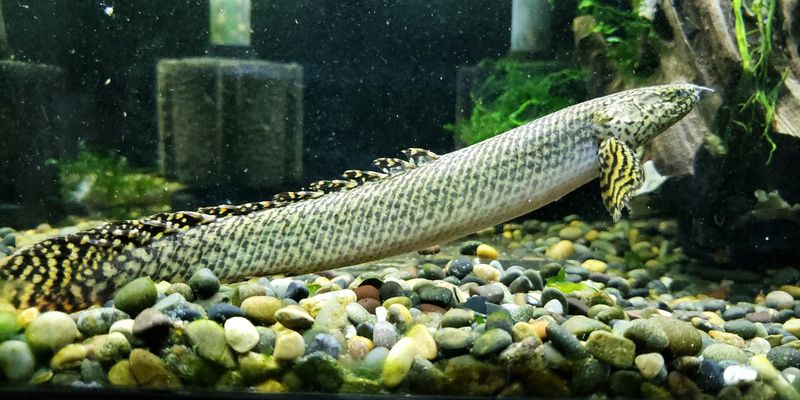
Bichirs, with their elongated bodies and finlets, resemble miniature aquatic dinosaurs. Native to African waters, they are now found in some parts of North America.
These fish breathe both in water and air, an adaptation that sets them apart. Their prehistoric appearance is complemented by their graceful swimming style.
Bichirs are popular in aquariums, where their unique look fascinates observers. Their ability to thrive in various environments demonstrates their evolutionary adaptability, and they continue to intrigue scientists and hobbyists alike.
Bowfin
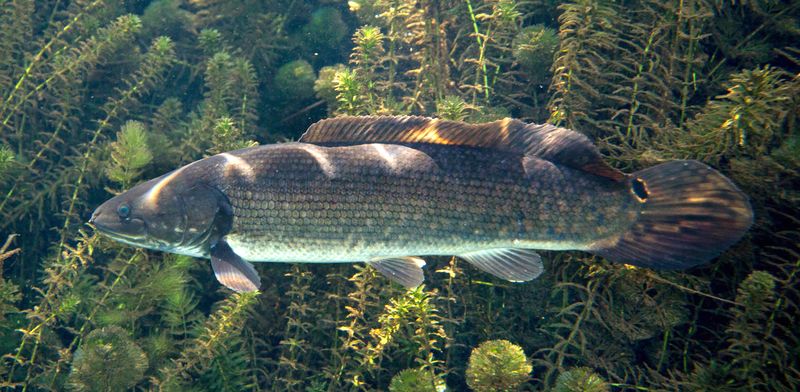
The Bowfin, often called a “living fossil,” showcases a blend of ancient features and survival prowess. Its elongated body and undulating dorsal fin create a serpent-like appearance.
Found in the swamps and rivers of North America, the Bowfin is a voracious predator. It can breathe air, allowing it to thrive in low-oxygen waters.
Bowfins have a reputation for being resilient, surviving environmental changes that would doom other species. Their tenacity and adaptability make them intriguing members of the aquatic world.
Lamprey
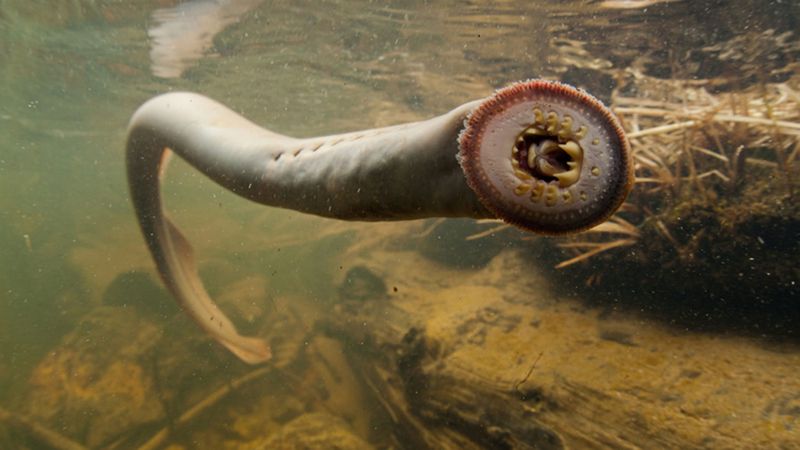
Lampreys are jawless fish that have existed for over 360 million years. Known for their suction-cup mouths filled with rows of teeth, they attach to other fish to feed.
These creatures can be found in rivers and lakes across North America, where they play a role in the aquatic food chain. Despite their parasitic nature, they are crucial for maintaining ecological balance.
Their eel-like bodies and unique feeding habits have intrigued scientists for generations, sparking studies into their evolutionary history and ecological impact.
Goblin Shark
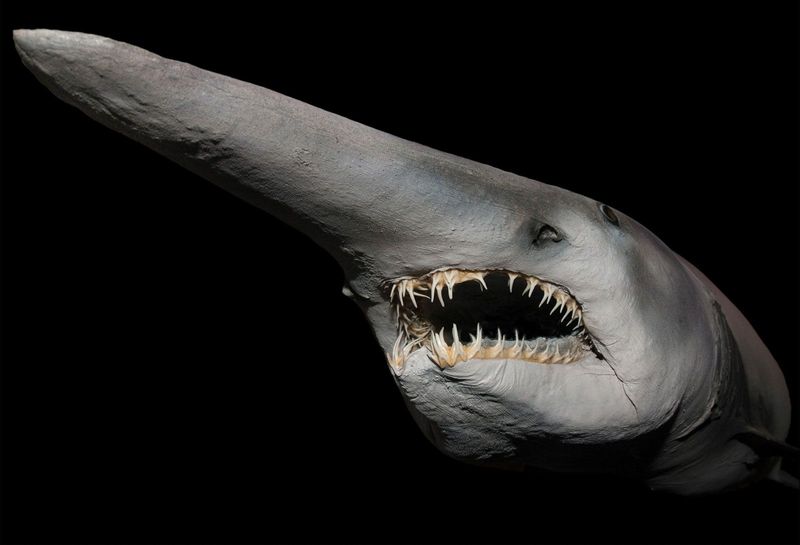
Resembling a creature from a sci-fi film, the Goblin Shark glides through the deep sea with a menacing presence. Its distinctively elongated snout and jaw make it an incredible sight, albeit rarely seen.
Living in depths where sunlight barely penetrates, this shark employs its electro-sensitive organs to detect prey. Its sudden, jaw-protruding attack is a marvel of evolutionary adaptation.
A quirky trait of the Goblin Shark is its ability to extend its jaw outwards to catch prey, a fascinating display of nature’s ingenuity in the dark abyss.
Axolotl
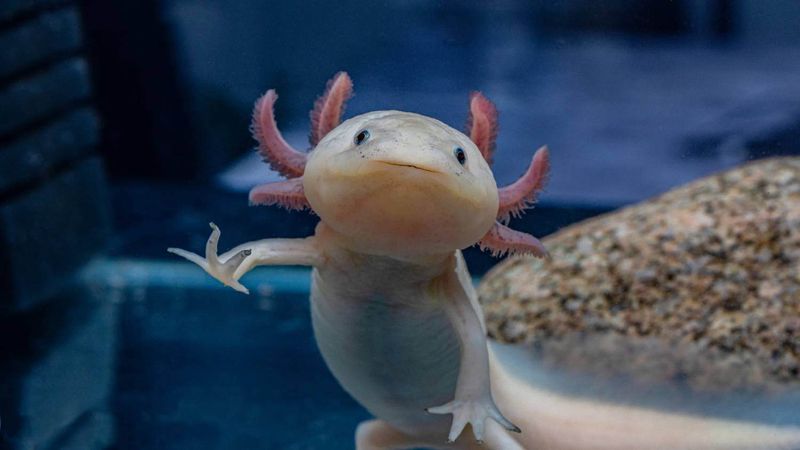
Axolotls, often referred to as “Mexican walking fish,” are unique amphibians with a distinctive, juvenile appearance. Known for their feathery gills and ability to regenerate limbs, they are a symbol of resilience.
These creatures inhabit the freshwater lakes and canals of Mexico but can be found in some American aquariums. Their playful demeanor and peculiar looks make them a favorite among enthusiasts.
Axolotls’ extraordinary regenerative abilities have captivated scientists, fueling research into potential medical applications for humans.
Giant Freshwater Stingray
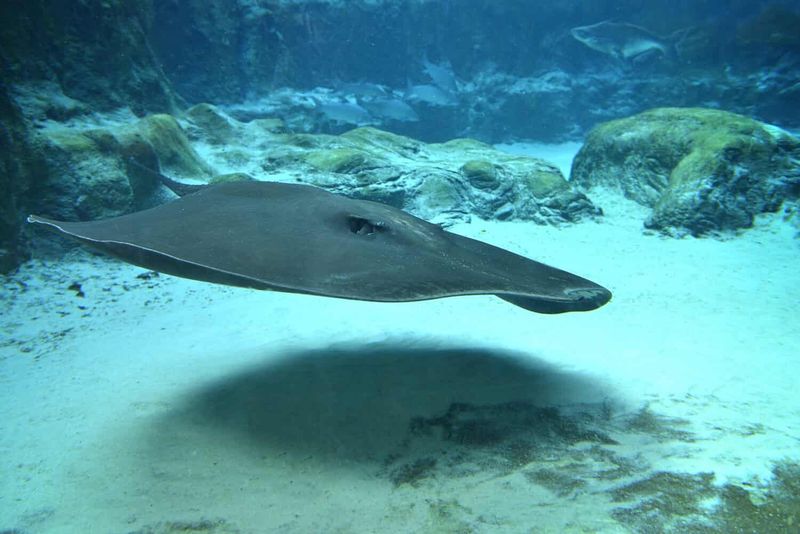
The Giant Freshwater Stingray, with its vast, disc-shaped body, is a marvel of nature. Found in Southeast Asia, they have also been spotted in some American aquariums.
These stingrays can weigh over 1,300 pounds, making them one of the largest freshwater fish. Their smooth, flat bodies allow them to glide effortlessly along riverbeds.
Their impressive size and gentle nature endear them to many, while their rarity adds to their allure. Conservation efforts aim to protect their dwindling populations from further decline.
Coelacanth
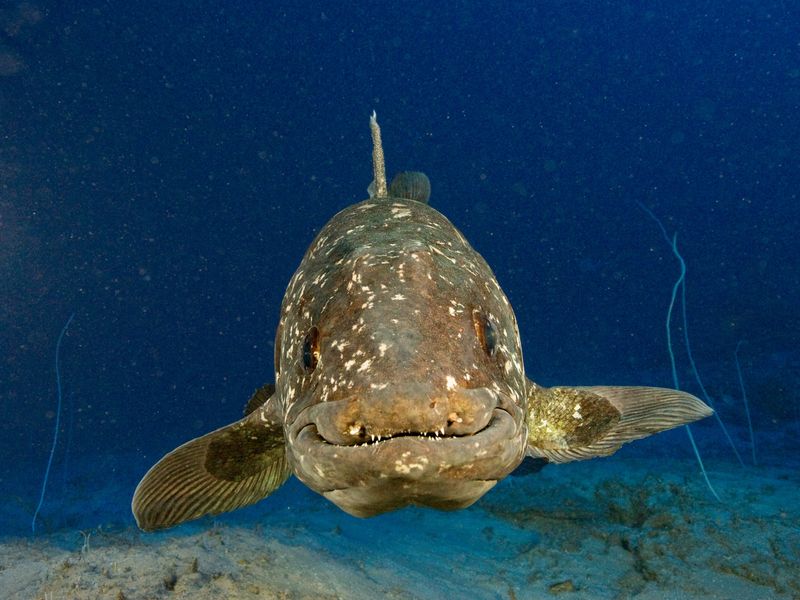
Coelacanths, long thought extinct, are remarkable for their lobed fins and prehistoric appearance. These “living fossils” were rediscovered off the coast of South Africa and have intrigued ichthyologists since.
Their discovery was akin to finding a dinosaur alive, sparking excitement and curiosity. Coelacanths’ unique physiology offers insights into the transition from sea to land creatures.
These fish inhabit deep ocean waters, where they remain elusive and mysterious. Their existence challenges assumptions about extinction and evolutionary history.
American Eel
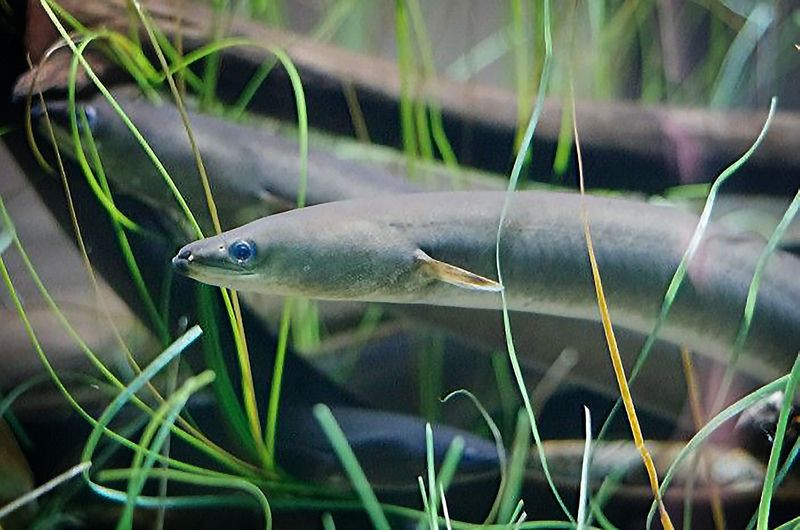
Slithering through the rivers and estuaries of North America, the American Eel is a creature of mystery and intrigue. Its long, slippery body allows it to navigate aquatic vegetation with ease, hunting nocturnally for fish and mollusks.
This eel’s life journey is nothing short of epic, migrating thousands of miles to the Sargasso Sea to spawn. Its remarkable life cycle contributes to its enigmatic charm and allure.
A peculiar fact about the American Eel is that all individuals are born in the ocean, yet many spend their adult lives in freshwater, displaying a unique adaptability to different environments.
Gulf Toadfish
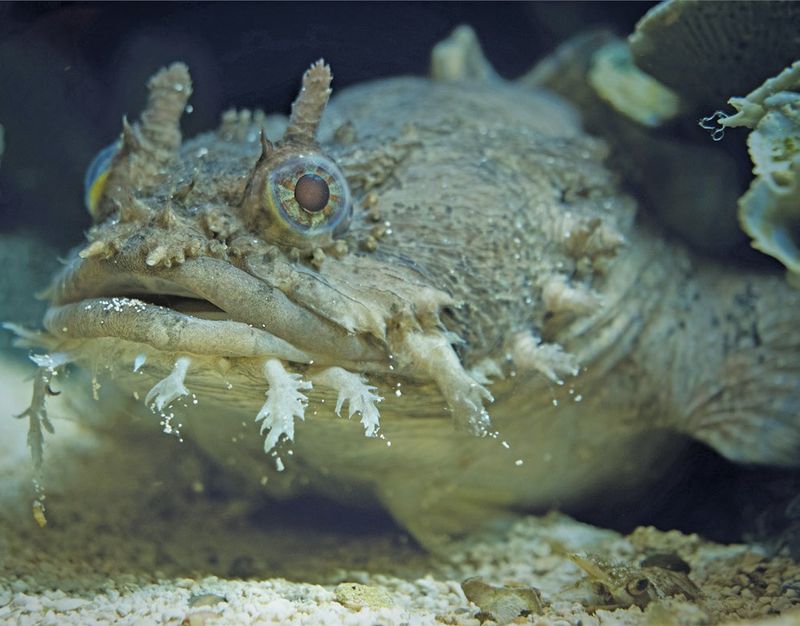
The Gulf Toadfish is a master of disguise, blending seamlessly with the rocky seabed to ambush unsuspecting prey. Its gruff appearance and croaking call have captivated many who explore the Gulf of Mexico’s coastal waters.
Despite its rough exterior, this fish has a surprisingly complex vocal repertoire, used to attract mates and ward off rivals. Its ability to thrive in both salt and brackish waters speaks to its resilience and adaptability.
Did you know? The Gulf Toadfish’s call is so unique that researchers have used it to study underwater sound communication.

